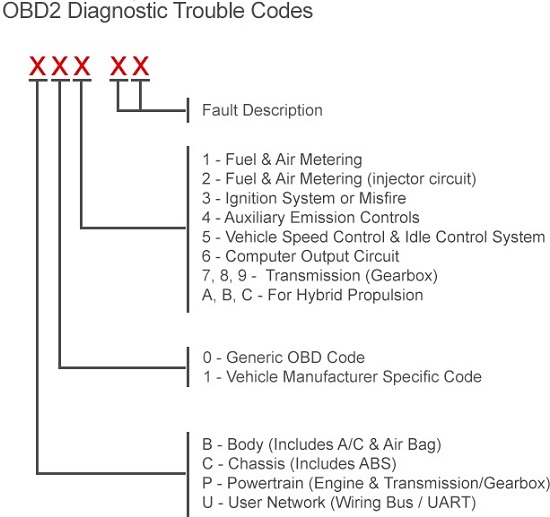Type of Diagnostic Trouble Codes
A trouble code is an alphanumeric value that corresponds to a particular type of fault. The list was originally created by the Society of Automotive Engineers (SAE) for use by all vehicle manufacturers who have to comply with OBD II emissions regulations in the U.S. The same list of basic codes have also been adopted by European and Asian auto makers. The list of trouble codes is subdivided into four basic categories:
Powertrain ("P") codes (engine, transmission and emissions systems)
Body ("B") codes (Climate control system, lighting, airbags, etc.)
Chassis ("C") codes (antilock brake system, electronic suspension and steering systems)
Network Communications ("U") codes (controller area network wiring bus and modules) These codes are further divided into two major groups:
Generic or Global codes, which have a "0" as their second digit to indicate they are common to all makes and models of vehicles. These are the codes that are required for basic emissions fault diagnosis.
Enhanced or Manufacturer Specific codes, which have a "1" as their second digit to indicate they are unique to a particular vehicle make or model. These special codes were deemed necessary by the vehicle manufacturers so they could provide additional diagnostic information beyond the basic list of generic OBD II codes for all kinds of faults, not just emissions-related faults. .

